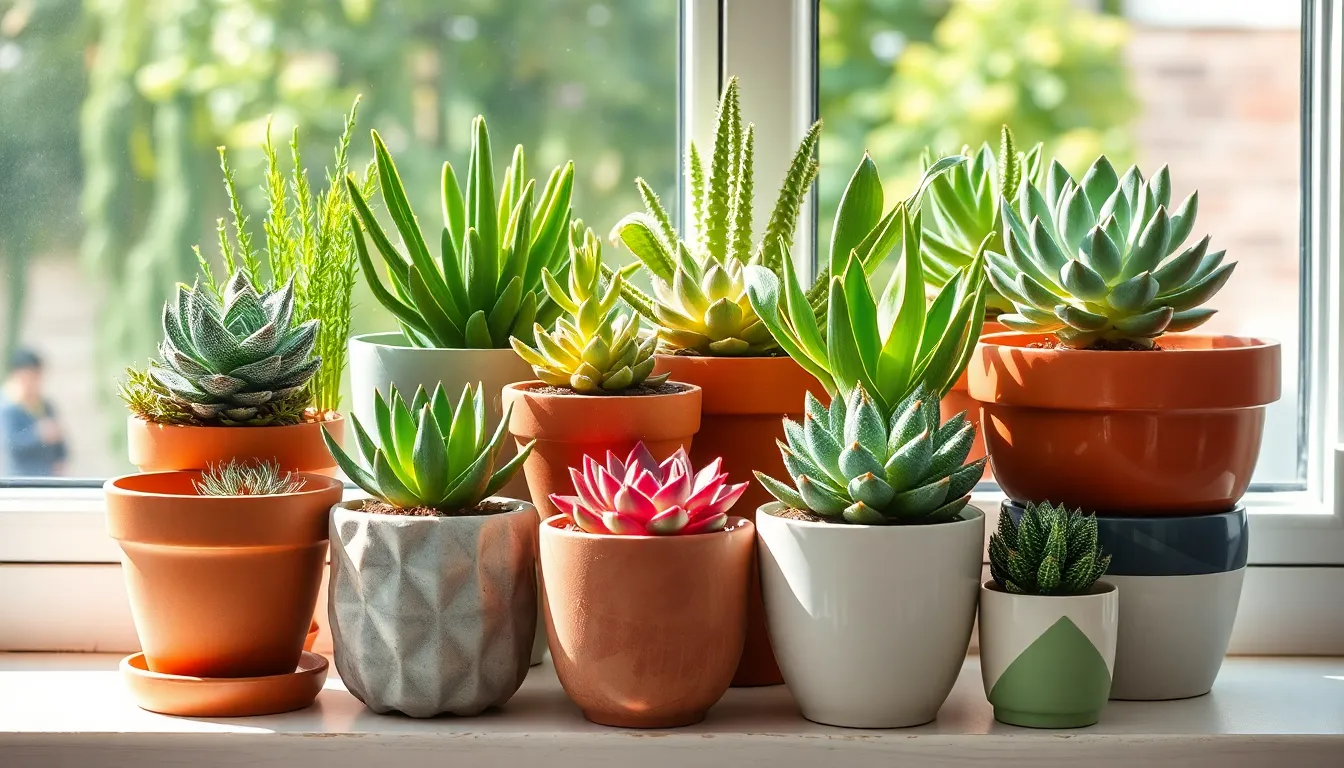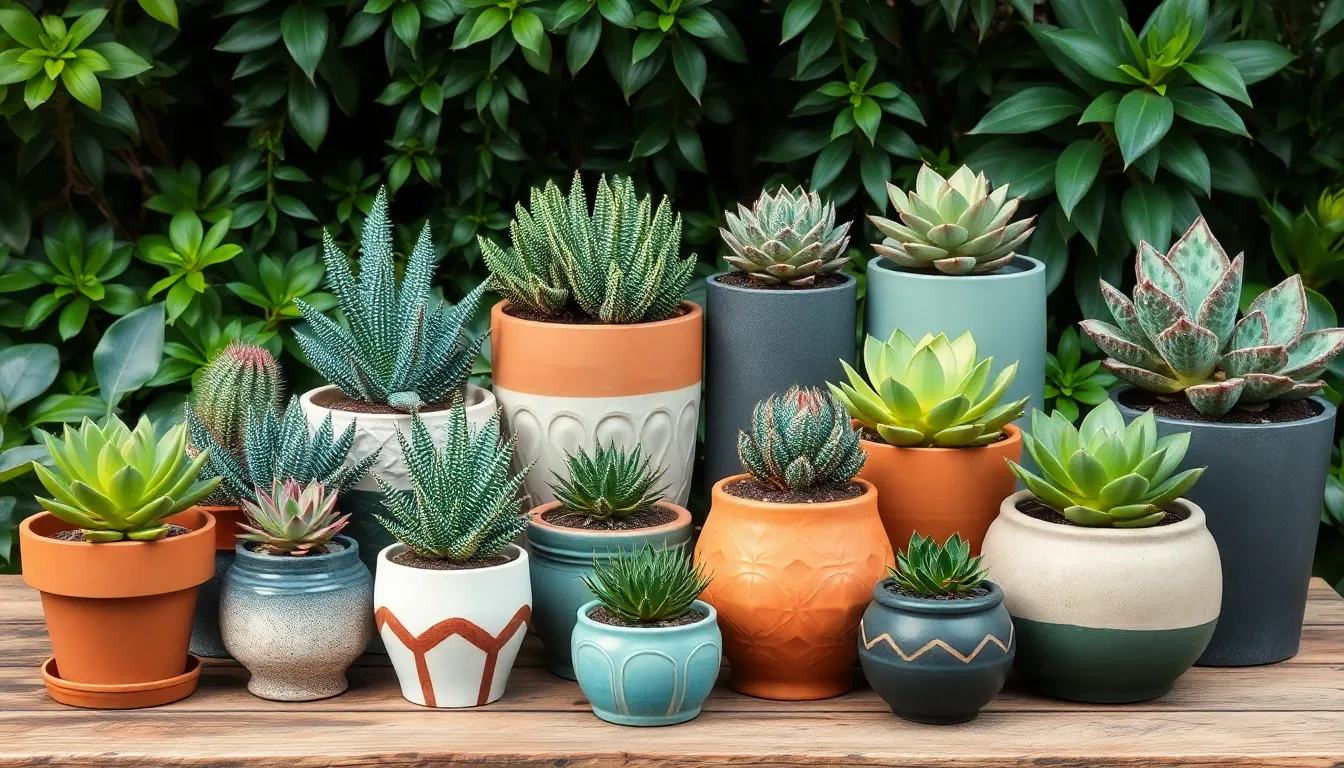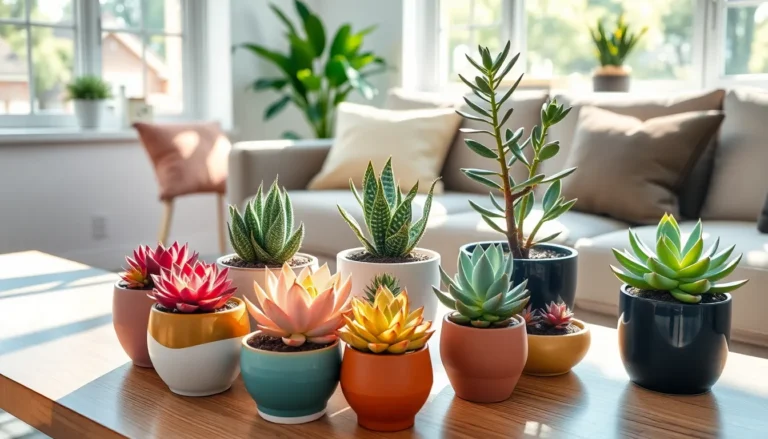The Best Fluffy Pancakes recipe you will fall in love with. Full of tips and tricks to help you make the best pancakes.

Best Pots for Succulents: Transform Your Plants with These Stylish and Practical Choices
Succulents are the cool kids of the plant world. With their quirky shapes and low-maintenance attitude, they’re perfect for anyone looking to add a touch of green without the fuss. But even the most laid-back succulent needs a stylish home, and that’s where choosing the right pot becomes crucial.
Best Pots For Succulents
Choosing the right pots enhances the health of succulents. Proper drainage serves as a vital factor, preventing root rot. Pots equipped with drainage holes allow excess water to escape, maintaining ideal moisture levels. Selecting the right material impacts temperature and moisture retention.
Terra cotta pots offer breathability, which is crucial for succulent roots. These pots absorb moisture, reducing the risk of over-watering. Plastic pots, on the other hand, retain moisture longer, so they may be suitable for beginners who want to minimize watering frequency.
Size matters significantly when potting succulents. A pot that’s too small restricts root growth and stresses the plant. In contrast, oversized pots retain too much moisture, leading to potential decay. Aim for a pot one to two inches larger than the root ball to promote healthy growth.
Style contributes to the overall aesthetic of the planted succulents. Unique designs, colors, and shapes can complement decor, adding visual interest. Decorative pots can create a striking focal point in the home or office.
Placement of the succulent also benefits from pot choice. Lightweight pots enable easy repositioning to find the perfect light conditions. Heavy pots may stabilize the plants in wind-prone areas.
Consider the environment where succulents will thrive. Indoor pots often differ from outdoor pots due to varying exposure to sun and rain. Choosing UV-resistant pots for outdoor settings protects from sunlight degradation.
Understanding these factors ensures a successful and stylish home for succulents. An informed decision leads to healthier plants and happier gardeners.
Types Of Pots Suitable For Succulents

Selecting the right pot enhances the aesthetic and health of succulents. Various materials serve different needs and styles.
Terracotta Pots
Terracotta pots provide excellent drainage. Their porous nature allows air to circulate around the roots, preventing moisture buildup. Many gardeners prefer this option because it helps maintain the right moisture levels. The earthy color complements many decor styles, adding natural beauty. They come in various sizes, making them suitable for different succulent types.
Ceramic Pots
Ceramic pots feature a glazed finish that retains moisture effectively. This retention makes them suitable for those who prefer less frequent watering. Various colors and designs enhance room aesthetics, allowing for creative displays. Insulation properties help regulate temperature, providing a stable environment for roots. Many pot sizes cater to diverse succulent arrangements and collections.
Plastic Pots
Plastic pots offer an affordable and lightweight solution for succulent lovers. These pots often feature drainage holes that prevent excess water from accumulating. Their lightweight design makes repositioning for sunlight adjustments simple. Many gardeners appreciate them for ease of handling and transport. A wide array of colors and styles makes them versatile for different decor themes.
Biodegradable Pots
Biodegradable pots represent an eco-friendly choice for succulent gardeners. Made from materials like coconut coir or rice husks, they break down over time. These pots improve soil health as they decompose, enriching the root environment. Additionally, they offer the benefit of natural drainage and moisture regulation. Using biodegradable pots contributes to sustainable gardening practices, appealing to environmentally conscious individuals.
Key Features To Look For In The Best Pots For Succulents
Selecting the right pot for succulents involves several key features that contribute to plant health and aesthetic appeal. Understanding these features helps ensure a thriving environment for these low-maintenance plants.
Drainage
Proper drainage plays a vital role in succulent health. Pots should feature drainage holes to prevent excess water buildup, which can lead to root rot. Without sufficient drainage, succulents may struggle to thrive. Most pots designed for succulents will have this feature to promote airflow and water escape. It’s important to monitor the soil for moisture levels as well, ensuring it’s neither too wet nor too dry. Choosing pots with adequate drainage protects the roots, allowing for better absorption of nutrients and water.
Size
Pot size directly influences the growth of succulents. A pot that’s too small restricts root expansion, which can stress the plant, while an oversized pot retains too much moisture, leading to decay. The ideal pot should allow for some growth without overwhelming the plant. Typically, a pot that’s 1-2 inches larger in diameter than the previous one works best for most succulent species. Ensuring the pot size is appropriate helps maintain healthy, flourishing plants. Regularly assessing plant size and adjusting the pot accordingly supports continued growth.
Material
Choosing the right material significantly impacts moisture retention and temperature control. Terracotta pots are popular for their breathable nature, which helps prevent overwatering. Ceramic pots, on the other hand, are often glazed, providing moisture retention which benefits some succulent types. Lightweight plastic pots are ideal for those new to succulent care due to their ease of handling. Biodegradable pots offer eco-friendly options that enrich the soil as they break down. Each material affects how succulents interact with their environment, so it’s crucial to consider the specific needs of the plants.
Tips For Caring For Succulents In Pots
Caring for succulents in pots requires specific techniques to ensure healthy growth and vibrant appearance. Proper watering and placement significantly affect their overall well-being.
Watering Techniques
Watering succulents involves a delicate balance. Soaking the soil thoroughly, then allowing it to dry completely before the next watering keeps roots healthy. Use the thumb test: if the top inch of soil feels dry, it’s time to water. Overwatering leads to root rot, a common problem for succulent enthusiasts. Consider the pot material as it affects moisture retention; terracotta wicks moisture away while plastic retains it longer. During the growing season, typically spring and summer, succulents may need more frequent watering. Conversely, reduce watering in fall and winter when plants enter dormancy.
Placement
Placement plays a crucial role in succulent care. Ensure that pots receive ample sunlight, typically 6 to 8 hours daily for optimal growth. Positioning near a south-facing window generally provides the best light. Succulents thrive in warm conditions, so avoid placing them in overly cold or drafty areas. Observe the plants for signs of stress, such as leggy growth or color fading, indicating they may not receive enough light. If changes in placement become necessary, lightweight pots allow for easy adjustments to find the most beneficial spot.
Conclusion
Choosing the best pots for succulents is essential for both their health and aesthetic appeal. The right pot enhances the beauty of these plants while providing the necessary drainage and support for growth. Whether opting for terracotta, ceramic, plastic, or biodegradable options, each material offers distinct advantages that cater to different needs and preferences.
By considering factors like size, drainage, and material, plant enthusiasts can create an ideal environment for their succulents. With proper care and placement, these resilient plants can thrive in any setting, adding a touch of greenery and style to homes and gardens alike.




